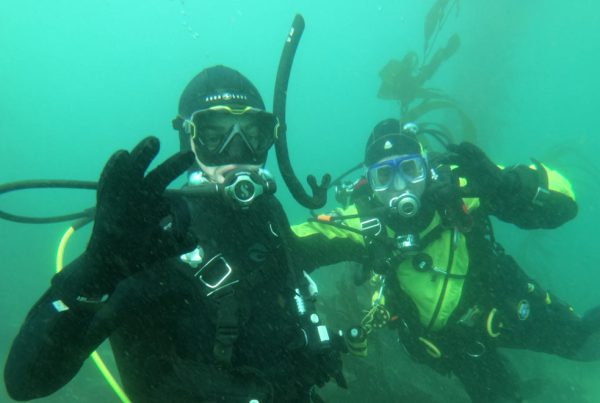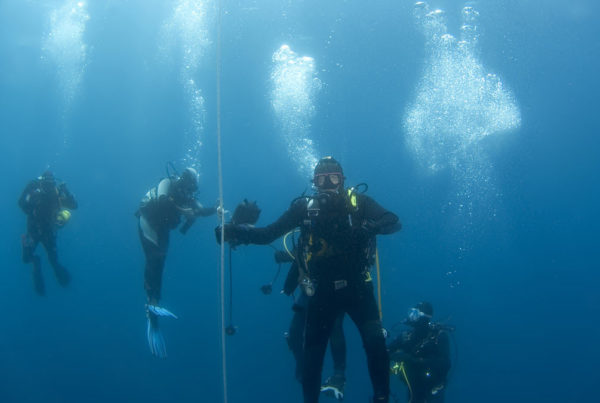I like diving with a buddy, not just for the safety aspects but for the shared experiences. Also, with a second set of eyes, I see more on dive with a buddy.
But the one situation that seems to create an excess of dive buddy problems is night diving.
Separation is a common problem, and more dangerous at night. Or if you’re diving in a group, you somehow end up attached to the wrong diver or in the worst case, blinded by your buddy with one of those mega-watt dive lights. When you are diving with a buddy at night consider a bit of etiquette and planning to avoid problems and make your dive more enjoyable.
BLINDING
The biggest faux pas in diving with a buddy at night is to blind them with your light. There is no reason, other than a severe emergency, to shine your light in your buddy’s eyes. If you do need to illuminate your buddy — to check gear, his state of being, hand signals, etc. — then shine your light at your companion’s chest and let the softer, much weaker light illuminate the face.
If you are trying to get your buddy’s attention at night, flash your light in a side to side motion across their chest, not their face. You can also convey a limited degree of your status with your light. A steady, regular, circular motion indicates “OK.” A steady side to side motion is to gain attention saying “come here.” An erratic fast motion is for emergencies and should be avoided in all other circumstances.
SEPARATION
Separation is best prevented with pre-dive communication and planning. Most importantly, have a common goal. If one member of a buddy team wants to hunt lobster and the other wants to do night-time macro-photography, separation will occur.
In your pre-dive planning, discuss signaling, navigation, how close you want to stay together, and procedures should you become separated. Fortunately, it is often easier to find a detached buddy underwater at night than in daylight because of the bright light. But if you are diving in a group, you could find yourself chasing the light of another diver.
PERSONAL DIVER I.D.
Everyone diving at night should wear a personal ID light. This usually takes the form of cylume (chemical light) attached to the snorkel or tank valve or a small battery-operated light usually mounted at or around the tank valve. These are mainly so that you can be spotted on the surface but they also are an excellent means for identifying individual divers, or identifying your buddy.
Individual buddies can be distinguished by unique lighting. This need not be fancy, just creative. Chemical lights come in different colors. Instead of wearing just one, wear two of different colors, taped together. Some battery operated I.D. lights have color choices as well, or flash. To further individualize, use a thin strip of tape. With distinctive I.D. lighting, you are less likely to inadvertently pair up with the wrong buddy when diving in a group.
Diving with a buddy at night should not be a source of irritation but rather added pleasure to your night-time underwater experience. A few simple steps will ensure a fun night dive for your and your buddy.









